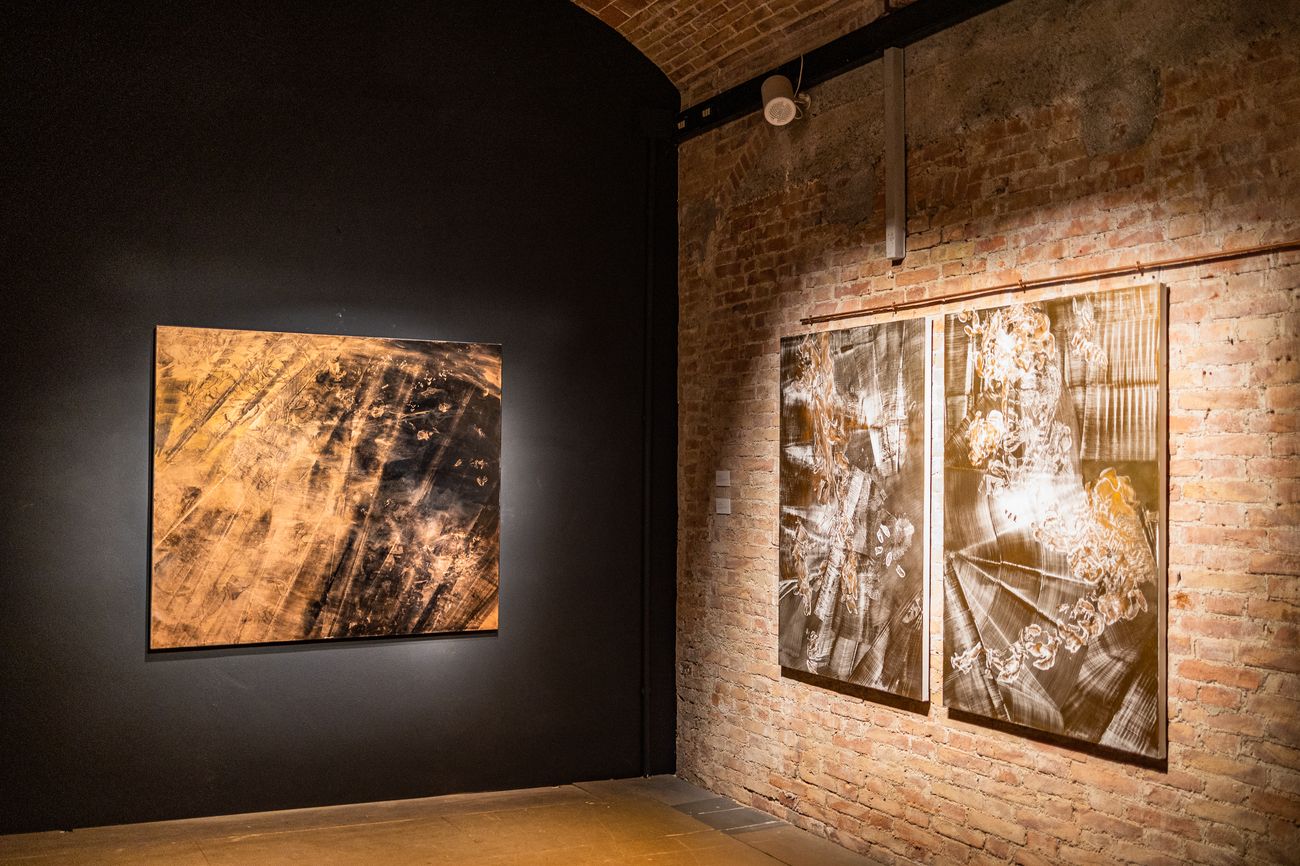The Vincenzo Scolamiero exhibition in Siena
In Siena, the Magazzini del Sale of Palazzo Pubblico house the works of Vincenzo Scolamiero. A pictorial reflection on matter and its variations
Renato Caccioppoli, as an illustrious mathematician and great pianist – in Naples they called him “o ‘genius” – used to say that “there is no great mathematician who is not first of all a poet“. Vincenzo Scolamiero (Sant’Andrea di Conza, 1956), with his Sienese exhibition at the Magazzini del Sale in Palazzo Pubblico (curated by Federico Fusj and inner room) seems to say that there is no authentic painter who is not sensitive to poetry and music . In fact, the dialogue with poetry and music Scolamiero makes the backbone of his staff. This is demonstrated by the works he dedicates to Louise Glück, the involvement of the historic Accademia Musicale Chigiana and the entire cycle in honor of Luigi Nono, who together with the sections Gold around And Then nothing else was red a total of sixty works complete the exhibition.
WORD TO SCHOOL BOY
Six ten of splendid paintings that interpret the articulated and complex space of the Magazzini di Palazzo Pubblico not as if it were an austere and solemn set of rooms, but a single block that Scolamiero’s painting infiltrates, so to speak, to the point of making unnatural the awareness that the at the end of the exhibition those works will be removed.
Of silence and transparency is the title of Scolamiero’s exhibition, whose relationship with the city of Siena is not occasional. In fact, the author says, “it has developed over time, from the years of my training. I had a few, sure for painting; my masters belonged to the ancient school, that of Sienese painting; and with them, some great artists of the twentieth century. I alternated the poetic reading of Enzo Carli on the marvel of Sienese painting at the studio of Francis Bacon, Alberto Giacometti, Giorgio Morandi. It seemed to me that I was playing with time and finding echoes of the architecture of Pietro and Ambrogio Lorenzetti, by Duccio di Buoninsegna in Bacon; and in Morandi, in Giacometti, the tone-on-tone colors, the monochromes of Lippo Vanni’s painting. The modernity of Sienese painting of the fourteenth century stimulated me to reflect on how art, the real one, is necessarily achronic, timeless, coeval of every era for observers of all times“.
THE SCHOLAMIER’S TECHNIQUE
And it is thus that the pigments, the inks, the metallic lamellar powders – the complex pictorial matter of Scolamiero, spread out on paper, on wood or on canvas, not only for the golds so dear to the Sienese tradition, but for the “dialectic of light ”Which breaks down everything and gives a synthesis ‒inverano a dialogue with the pictorial past of the city demonstrating without any embarrassment, once again, that when art is authentic it is always contemporary.
The dizzying technical skill of this author surprises and illuminates in recreating an imaginative reality that makes him a creator rather than a narrator. A demiurge rather than an observer albeit an attentive one. This is why his virtuosity, the repertoire of images that allude to the real world – plant artifacts, flat images that seem to evoke precious fabrics or pages of a Homeric literature, embroideries, glazes, transparencies prove the many horrors of the post-contemporary but are intellectually passionate, they leave themselves restless. Scolamiero’s painting is by no means so abstract, but neither is it a realistic representation of what it is as it appears.. Scolamiero’s is a world that he discovers by traveling “with” and “in” painting. And by discovering it, he gives it back to us, as if he were creating it for us.

THE SECOND SCHOOLBOY JOURNEY
Emilio Villa defined Vincenzo Scolamiero as an “ulyssic traveler”. A traveler from the depths who, from the depths, brings to the surface the images of an unexplored and unspeakable universe. Here, the Siena exhibition looks like the story of a traveling painter who discovers, by wandering, a still unknown reality.
Scolamiero’s world suggests boundless celestial spaces, galaxies, stars and unknown planets. But it also makes us think, in a surprising way, of what the electron microscope allows us to investigate in a very small, infinitesimal reality. The infinitely small and the infinitely large merge in a universe of universes that had fascinated Giordano Bruno and intrigued Fritjof Capra, the author of TAO of Physics, expert of the submicroscopic world, of quantum theories and, above all, of the links between a primitive oriental culture and the twentieth-century acquisitions that undermined the certainties, of which Newtonian physics and positivism were expressions. Vincenzo Scolamiero’s paintings, tables, papers and artist’s books allude to the complexity of this world.
– Roberto Gramiccia




